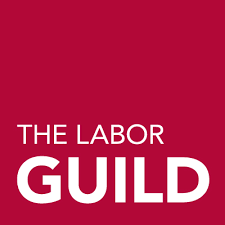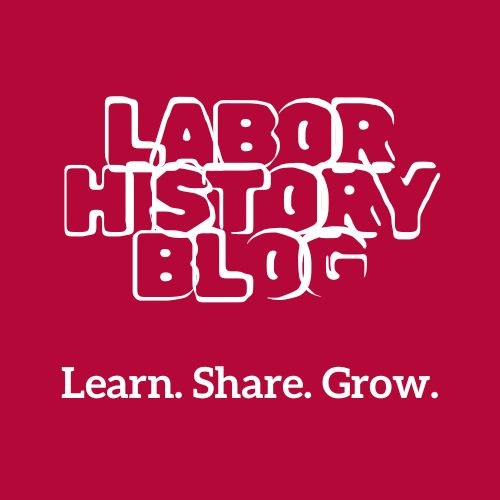May 2024 Labor History Blog: May Day
by David Kowalski, Former Executive Director of The Labor Guild
This month, I am going to talk about the May Day Riot in Chicago in 1896. Labor is just one piece of the puzzle. We are affected by many influences such as (but not limited to): regulations, statutes, economics, social trends, industry, and the people that can influence our situation.
In a capitalist economy, booms and busts are normal. These sorts of things happen very rarely in social democracies. However, this is the playing field we are on, and it is normal. To prove this point, were you aware that in the 1800’s, America saw five economic depressions, back then they called them “Panics”? The Panic of 1893-1897 was the worst depression the country had seen and was caused by over speculation of railroads. Railroads were over-built, with expenses that could not be covered by revenues. New mines flooded the market with silver, and its price fell. Citizens tried to redeem their silver notes in favor of gold, but the Federal Reserve could not accommodate the gold for silver transfer due to the drop in silver prices. Farmers especially felt a drop in the price for wheat and cotton. A sharp drop in the stock market which led to panic selling a month later, caused the market to crash. The credit crunch caused 16,000 businesses to fail including 156 railroads: Northern Pacific, Union Pacific, and the Atchinson, Topeka & Santa Fe along with 500 banks. At this time, one in six people were unemployed.
Now along with this situation, throw in immigration. Our cities began to grow rapidly. In 1850 there were 30,000 people living in Chicago and by 1870 there were 300,000. New York, the third largest city in the world, had 1 million people in it in 1875, and would double in twenty-five years. The criminal conspiracy precedent handed down from the Commonwealth v Hunt trial in 1842, while successful, was also lengthy. However, despite the cumbersome trial processes, unions steadily increased where they combined into city federations. In 1866 we saw the first group of local unions that organized into a national federation called The National Labor Union (in Baltimore) which fought for the 8-hour workday (which did not come until 1932) and claimed 500,000 members that lasted until 1873.
In 1869 the Knights of Labor formed under the leadership of Uriah Stephens and the direction of Terrance Powderly, and the organization grew to nearly 750,000 members. The Knights were successful in organizing unskilled workers, which because of their abundant supply were easily replaced. The craft unions on the other hand were more difficult to replace and under the American Federation of Labor and the auspices of Samuel Gompers were a bit more secure within their employer-union agreements. Thus began a gap between the skilled and unskilled workers that lasted until the merger of the American Federation of Labor and the Congress of Industrial Organization in 1955.
Along with the growth came the glaring chasm between the rich and the poor. The contrast was made even more vivid in cities, where one could see the wealthiest capitalists and the poorest of the poor. The commodity of labor was in abundant supply, therefore, the cost of that labor was very cheap to purchase. It was the corporate business model that provided the machinery which perpetuated perverse amounts of wealth and opulence that served as a predicate for class warfare. Life for the most part revolved around acquiring the basic necessities of food, water, shelter, and clothing. There was no disposable income for the average worker. Workers were dependent on the benevolence of the company owners for their survival. The workers were growing angry that the very wealthy were not allowing them enough wages to survive, never mind prosper. The time was ripe for a volatile event to occur.
Because the unskilled factory workers were easily replaced, they found a home with the Knights of Labor and became active in workplace defiance as in the case of the Haymarket Square riot. It is important to know that many of their members brought with them from their homeland, anarchist doctrine, which like any other group contains radicals. In 1886 workers struck the McCormick Harvesting Machine Company to procure an eight-hour day rather than the regular twelve that was in effect. The company then locked out the workers and hired strike breakers to replace them. On May 1, 1886, the annual Chicago May Day parade took place. Then two days later, during a protest outside the plant, police attacked workers which resulted in two deaths and several wounded.
A mass protest was scheduled and planned in Haymarket Square on May 4th. The meeting was for the most part peaceful as anarchist speakers addressed the 1,500 people present. The peace ended as the police engaged to break up the protesters. As fights broke out someone lobbed a bomb into the crowd and shrapnel ripped through the crowd. Police reacted by firing their weapons into the crowd, that some say lasted for two minutes. The result was that seven policemen were killed along with four civilians. Where some members of The Knights of Labor were anarchists, they were accused of throwing firebombs at the Haymarket Square incident.
The public viewed the Knights of Labor as the agitators of the incident, a charge that the organization never recovered from. A hatred of immigrants ensued due to the event. This xenophobia ran rampant throughout the city where a biased public with no credible evidence tried and sentenced 15 men. Seven were sentenced to death and four of them were hanged. One committed suicide the night before he was scheduled to die. Two had their sentence commuted to life and the last received 15 years in prison. Making no gains for their efforts and facing stronger militias to combat their efforts, as well as an increasing anti-union sentiment toward them, the Knights of Labor disbanded in 1894.
Unskilled workers were left in a vacuum. It wasn’t until 1895 when President of the American Railway Union Eugene Debs was sentenced to 6 months of prison time due to his role in the Pulman Strike, where he ran for President of the United States while in jail. During his sentence he studied Karl Marx’s Socialist Doctrine. Not only did Debs help create the Socialist Party of America but he also began the International Workers of the World union in 1904, to which the unskilled workers flocked. After what I just told you brings us back to the reason that people organize; “Societal need”. As much as we want and need to be independent, in the process we really do need each other, so that we can create and live in a world that is fair and fulfills our needs as a society.
Much of the criticism thrown on Communism is justified. Not so much for Socialism, because Socialism is an economic policy not a political policy as Communism is. Make no mistake, if it was not for these radical movements, threatening the self-preservation of the industrialists, there would be no Labor Movement. Remember, there is nothing wrong with the Capitalist system that a strong dose of regulation can’t cure.
Join Our Mailing List
For Guild news, Labor School updates, Workshops, and CGA information.

